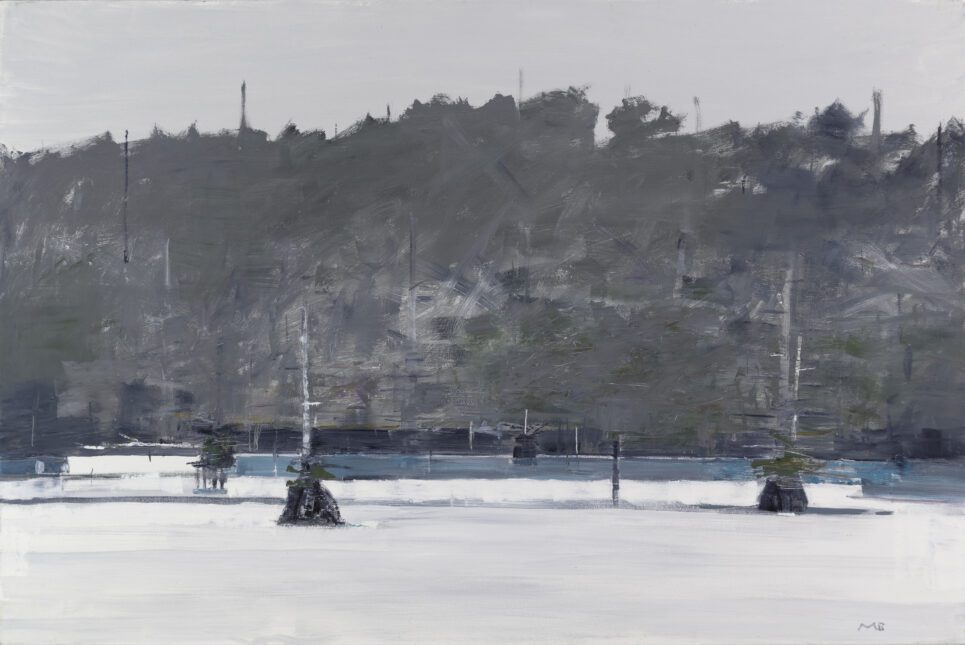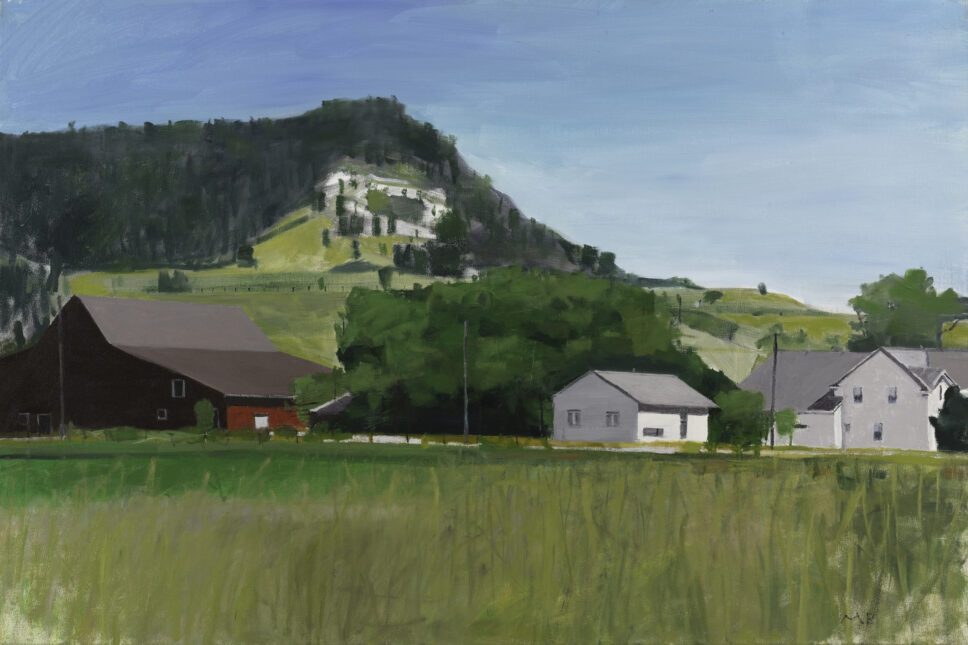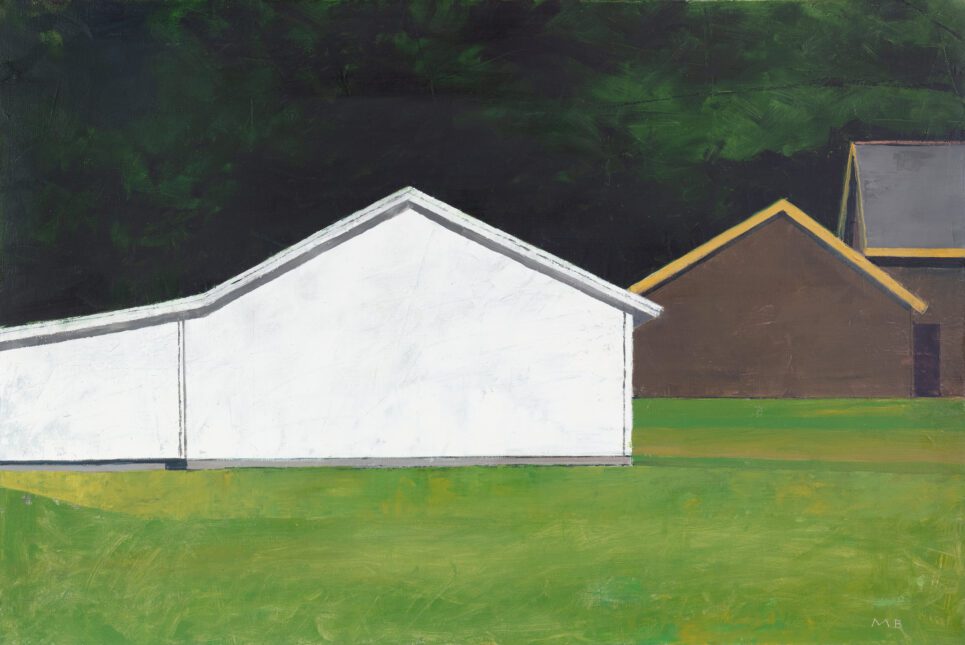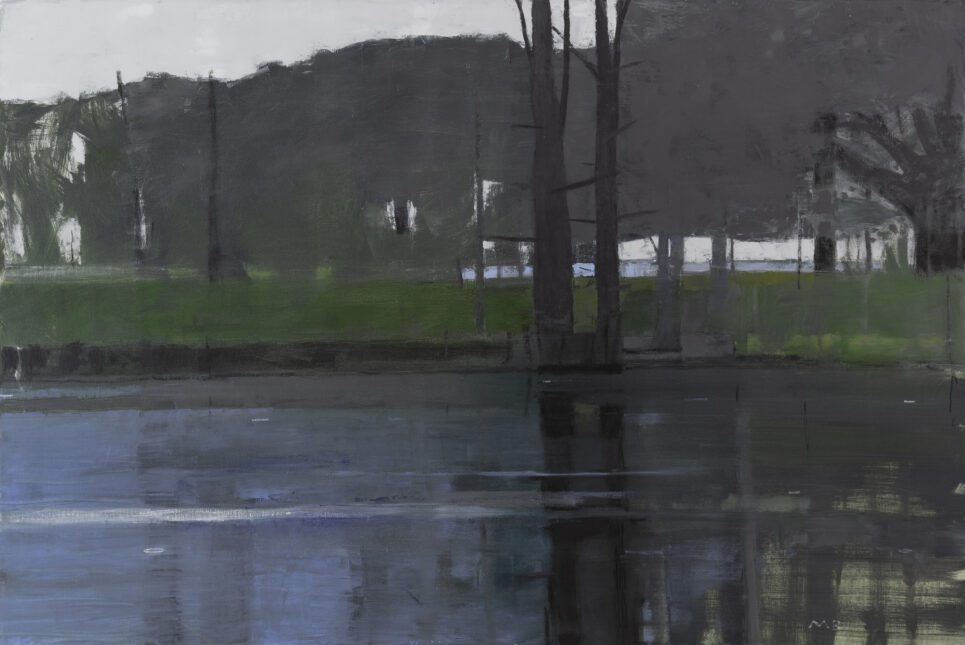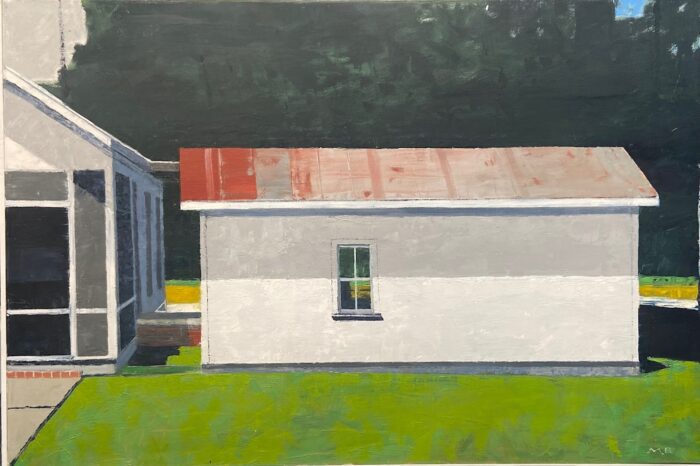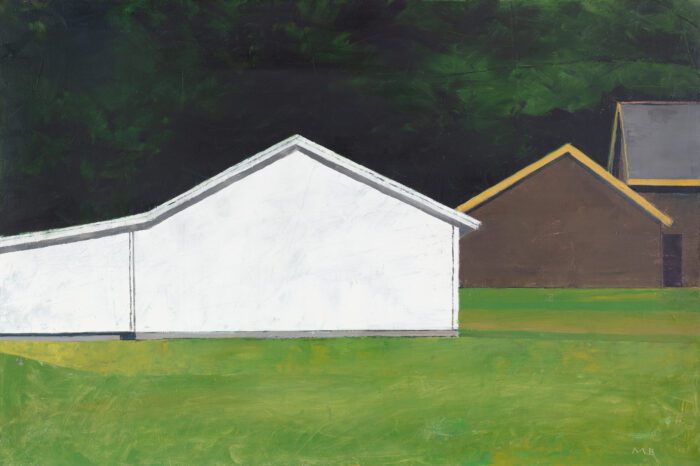Artist and architect Mac Ball finds inspiration in riverine environments and coastal southern landscapes. Raised along the waterways and marshes of Charleston, South Carolina, he now resides in New Orleans where he has been witnessing an ever-increasing crisis of land loss and environmental devastation. Since Hurricane Katrina, his architectural firm has been rebuilding the City and has focused on sustainable water management. Waggonner & Ball has teamed with experts from the Netherlands to weave stormwater management concepts into urban design initiatives and coastal stormwater projects in Connecticut, Norfolk, Charleston and Houston.
Mac’s love of Louisiana’s coastal landscape and a fascination with the way water alters one’s perception of the environment has fundamentally changed his artistic direction in this time of sea level rise. Counterpoised with coastal imagery, a fascination with the source and movement of water that flows to the sea has also born a body of work that is focused on movement and the refraction of light and color that plays upon highland streams.
“Climate change will continue to erode and transform landscapes and waterways, yet Earth will continue to yield magic and beauty throughout this ongoing and inevitable process. My hope is that my work will, for a brief moment, capture the materiality and light, the feel, of this ephemeral threshold in time.”
Born 1953, Charleston, SC
Currently lives and works in New Orleans
Education
1975
B.A. Studio Art / English; University of North Carolina, Chapel Hill
1978
M. Arch; Yale School of Architecture, New Haven; William Wirt Winchester Travelling Fellowship
Select Solo Exhibitions
2024
Mac Ball / Recent Work, Cole Pratt Gallery
2021
Stillness, Cole Pratt Gallery
2021
Riversongs, Page Bond Gallery
2019
Islands / Bitterroot Suite, Page Bond Gallery
2018
Topological Narratives, Cole Pratt Gallery
2016
Wish You Were Here, Cole Pratt Gallery
2013
Modern Life, Cole Pratt Gallery
2012
Recent Paintings, Cole Pratt Gallery
Select Group Exhibitions
2023
Ogden Museum of Southern Art, New Orleans / 20th Anniversary Exhibition
2022
Looking Out / Looking In, StudioWaveland Gallery
2021
Ogden Museum of Southern Art, New Orleans / Louisiana Contemporary Exhibit
2019
Ogden Museum of Southern Art, New Orleans / Louisiana Contemporary Exhibit
2010
James Stirling at Yale/Student Work. Yale School of Architecture
2009
Make it Right/From Concept to Community, Contemporary Art Center
2008
Group Show: Mac Ball/Recent Paintings, Uptown Gallery
1999
Art by Architects, Contemporary Art Center
1995
Ten Years Out, Yale School of Architecture
1993-98
Birdhouses By Architects, New Orleans Museum of Art
Select Collections
Iberia Bank
The Historic New Orleans Collection
Bayou District Foundation / Columbia Parc
Capital One Bank
Plauche Maselli Parkerson, LLC
Lambeth House Senior Living
Related Experience
2011
Elected to College of Fellows (FAIA), American Institute of Architects
1989-Present
Principal and Founder, Waggonner & Ball Architects, LLC
1985-1989
Associate, Eskew, Vogt Salvato & Filson Architects
1979-1985
Design Team Leader, Cesar Pelli & Associates, New Haven
1978-1979
Roth and Moore Architects, New Haven
-
Recess
July 11 to August 30, 2019
-
ISLANDS / BITTERROOT SUITE: MAC BALL
November 1 - December 6, 2019 | Reception November 1, 6-8pm
-
GOOD WILL
DECEMBER 7, 2023 - JANUARY 22, 2024
-
MAC BALL: RIVER SONGS / NEW PAINTINGS
AUGUST 26 - SEPTEMBER 25, 2021













